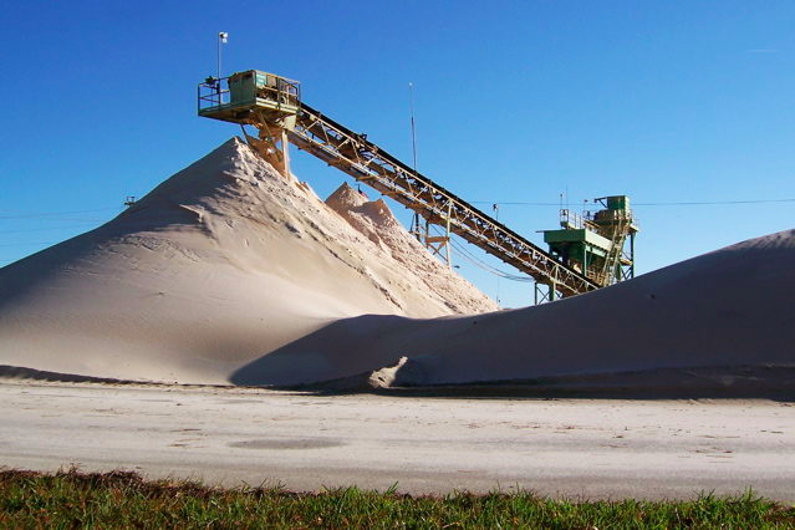If you are already working in the frac industry you will understand that there is often a fine line between making a profit or finding yourself working against the clock to keep your costs under control.
All the components in the process need to come together in a timely manner and that is why sand suppliers like www.alpinesilica.com work with you to help meet those critical deadlines.
This is just one aspect of running a frac site and here are some pointers to what is involved.

Hydraulic fracturing explained
Fracking, or hydraulic fracturing to give it its full description is a process that is designed to extract oil and gas from shale rock.
Every frac site will operate in much the same way to a certain extent and the process primarily involves drilling deep down into the earth, after which sand, water, and chemicals are injected into the rock at high pressure.
This action provides a way for the gas to flow out and travel to the top of the well.
The reason it is described as fracking is because it describes how the rock becomes fractured by the high-pressure mixture.
Water plays an important role
A notable aspect of the fracking process is how much water is needed to ensure that the process is successful.
To achieve a positive result it needs a volume of water that is equivalent to approximately Olympic-sized swimming pools, together with the chemical additives and sand, all of which is pumped into the shale rocks that are lying somewhere between two and three kilometers under the surface.
The cumulative effect of this action is to create a network of fractures within the rock structure, causing a release of gas or oil that joins the water stream created by the tiny fractures in the rocks, allowing it to be carried or pumped to the surface.
Preparing for drilling
There are several drilling options and strategies to deploy and you will have to decide which one is most appropriate to the situation and circumstances.
If you are not yet ready to commence the full drilling operation but want to lock in the lease that has been secured, it may be prudent to drill one well on the land and come back to it at a later date.
Another technique involves drilling the vertical positions of all of your proposed wells, first of all, using a smaller rig. The normal procedure would be to drill down to what is known as the kick-off-point, which is the level where the curved section will commence.
Afterward, the next step would be to follow up using a larger rig that has the capability of drilling the turn to a horizontal position covering the full length of the horizontal bore.
Alternatively, you can consider using a large drill rig that has the ability to complete both the horizontal and vertical wells required.
The approach you take can often be dependent on the size of the plot of land that you have at your disposal.
Once you have completed the drilling process and the well is ready, your next step is to case and cement it.
Making allowances for water storage and sand deliveries
You will need access to a sufficient supply of water and sand to assist with the fracking procedure and that means organizing storage options that are as near to the drill pad as possible.
It should be remembered that you will need the largest volume of water during the hydraulic fracturing stage and there are a number of ways you might look to satisfy this demand.
A typical frac site will need to call upon between four and six million gallons of water and if you do not have the ability to place storage tanks on site that is large enough, this may not matter if you can access the water from a high-volume pipe source nearby or there is the ability to create a freshwater impoundment close to the drill pad.
Hydraulic fracturing equipment and supplies
It is commonplace to use a fracturing contractor to provide most of the equipment required for the job.
This will include sand mixers, a wireline truck a suitable control center to oversee the operation.
There will likely be a steady stream of tractor trailer trucks or sand cans, delivering sand to the frac site and the sand will often be sourced from locations where silica sand is available in large quantities.
You will be working with hydrochloric acid on site, as this is used in the acidizing element of hydraulic fracturing. This is where acid is pumped directly into the formations in order to encourage the flow of fluid and gas.
Completing the well pad
Once flaring and flowback is complete the next step is ensuring the well pad is cleared off.
Storage tanks are used to accommodate condensate, which is also referred to as natural gas liquids, and great care has to be taken with this aspect of fracking as these are extremely volatile and explosive liquids that you will be contending with.
It might also be the case that you use telemetry and wireless sensors as a way of monitoring pressure levels on the well heads themselves and storage tanks.
Using production separators
Finally, you will need to make use of gas processing units, which are connected to the well heads by pipes.
The specific purpose of a gas processing unit is to separate the raw gas that has been extracted into brine, condensate, and natural gas.
You will also have to consider how you are going to deal with the waste products that are created as part of the shale gas extraction process.
The waste you will have to contend with includes flowback and brine, plus the sludge that accumulates at the bottom of the tanks, as well as solid waste such as drill cuttings.
There is a lot to consider and procedures that have to be followed rigorously if you are going to run a fac site effectively, but the end result should justify the effort involved.




